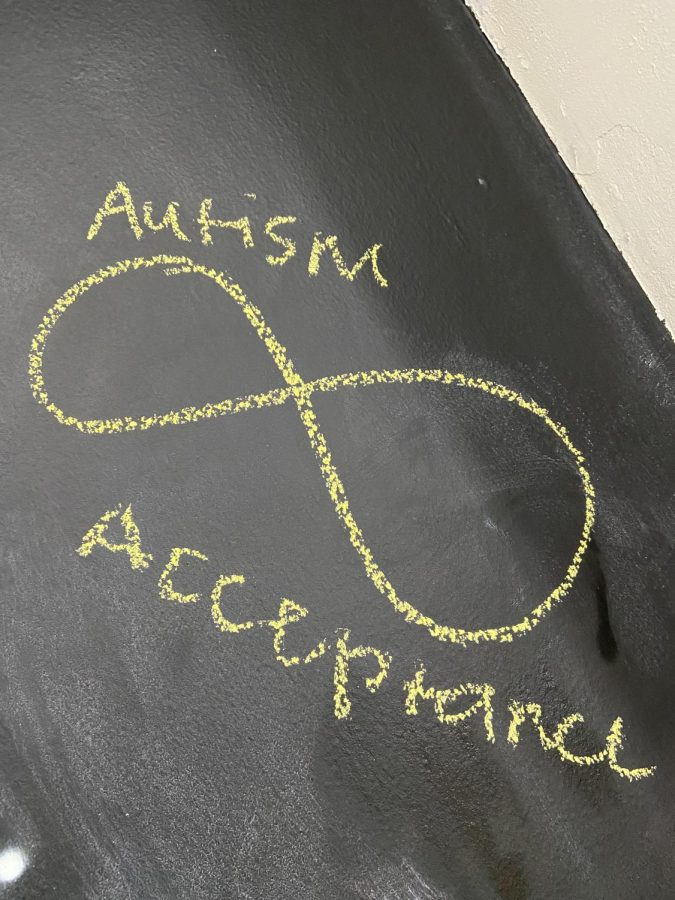Autism Acceptance Month: Acknowledging the spectrum
Autism Acceptance Month is more than just knowing the facts of autism
The infinity loop, representing autism acceptance.
April 30, 2023
LOS ALAMITOS, CA — Every April, the world celebrates the inclusion of autistic people in society through Autism Acceptance Month. Through this time, it is important to be sure to include and understand people with autism in all walks of life.
I thought it was Autism Awareness Month?
Technically, there is no specific designation to April as either Autism Awareness Month or Autism Acceptance Month. Sometimes, April is also referred to as World Autism Month. However, Autism Awareness Month and Autism Acceptance Month are not interchangeable, nor are their respective terms: autism awareness and autism acceptance.
Though Autism Acceptance Month is less widely used, some argue that it is more representative of celebrating people with autism. While autism awareness focuses on understanding and curing the social disorder, autism acceptance is about accommodating and being open about having autism.
“I am very open about having autism. I feel like it’s important to be open and having it so that it can be normalized in conversation,” said Adam Tan, a Los Al graduate and student at the University of California, Irvine.
Understanding autism
Autism Spectrum Disorder (ASD) is a developmental disability that affects behavior. Unlike other developmental disabilities, there is no clear diagnosis of autism, nor do researchers know where it comes from. Disproving a common misconception, autism is not an illness; it is something that somebody is born with. However, at the end of the day, there is one recurring theme: autistic people want to be treated like any other human being.
There are three levels of the autism spectrum: levels one, two, and three. One is the mildest form of the social disorder. People on level one of the spectrum can function independently, but they may have issues with social interaction, and some repetitive behaviors may persist. The second and third levels of the autism spectrum exhibit more pronounced complications with social interaction and repetitive behaviors. However, people on level two of the autism spectrum often speak in simpler sentences and have a harder time with gestures or other forms of nonverbal communication. Level three people have these troubles to a greater extent, and have issues initiating interactions with others. These levels are good for addressing what support needs a person might demand, but every autistic person has their strengths and weaknesses.
Additionally, there is a span of different needs for each person. The two main dogmas of support are high support and low support needs–formerly called low functioning and high functioning. High support means that someone has more needs, while low support is the opposite where someone needs less. Some needs include people like speech pathologists or teacher assistants. Others are time-based; some need extra time to finish assignments or tests.
Evolving terminology
Every person deserves respect and dignity, and so do autistic people. That is why terminology when talking about the autism spectrum is ever-changing.
Terms like high-functioning and low-functioning have been altered to low support needs and high support needs. High-functioning would imply that the struggles of people on this side of the spectrum were not as important as someone who is low-functioning. This would lead people with low support needs to mask or hide their autistic traits in an attempt to seem neurotypical. However, both the terms high-functioning and low-functioning focus more on how someone is functioning, and less on what needs are necessary for them to thrive in society.
One of the most popular symbols of the autism spectrum is the puzzle piece. However, many people on the spectrum do not like the meaning of the puzzle piece. Some think that the puzzle piece is too childish, and does not accurately represent that autism is a lifelong affair. Others believe that the puzzle piece implies that people with autism are puzzling or need to be “fixed”–an example of ableism.
In response to the fraught reactions of the puzzle piece symbol, most people instead recognize the rainbow infinity symbol. This symbol is a better representation of the life-long nature of autism and how people live their lives in different ways.
Additionally, some common behavioral disorders have been put under the autism spectrum umbrella, such as Asperger’s syndrome. Before being part of the spectrum, Asperger’s syndrome used to be its own standalone behavioral disorder. In 2013, The Diagnostic and Statistical Manual of Mental Disorders (DSM) eliminated Asperger’s, combining it with autism in their current DSM-5 reference book.
Ableism
Ableism is a form of discrimination not just for autistic people, but for people with any disability. This form of prejudice stems from the belief that people with disabilities are inferior to those who do not. Sometimes ableism is direct, such as in the forms of hurtful comments or a company’s no-hire policy for someone disabled. However, some forms of ableism are more indirect. For example, talking to an autistic person as if they are a child would be considered ableist, because it shows little respect. Complimenting an autistic person for completing menial tasks well in their abilities would be another example of ableism because, at the end of the day, an autistic person wants to be treated like anyone else in society.
The worst thing to do to an autistic person or anyone disabled is to assume. Assuming that someone on the spectrum will not live a full and happy life is ableist. By thinking in such ways, it could inhibit the opportunities that someone with a disability might otherwise have.
Additionally, assuming that people want to be “cured” is wrong. Autistic people are often proud of having autism.
“There’s nothing to be self-conscious about,” Tan said, commenting on his autism.
Conclusion
Autism Acceptance Month is more than about knowing the facts about autism; it is about how to include people with autism in society. For most autistic people, there are few annoyances to having the behavioral disorder.
“The most annoying part about having autism is that most people want you to act neurotypical,” Tan said. “‘Smile more; sit properly; don’t be so direct.’ If you’re neurotypical, please educate yourself more about autism. We don’t want to conform, we just want to act like ourselves.”





